Warm ups are interesting, especially for things like squats and deadlifts. In theory, warm ups are simple, right? Do whatever helps prep you for your workout best, but that statement right there — while simplistic in nature — can make the whole process a tad more complex than what it should be.
Regardless who you are, warm ups should be individual and how you warm up should be methodical based on your physical (when your body feels best) and practical (time constraints, equipment, etc.) needs. As we dive into this squat warm up article, it’s important to remember that how you warm up should be individual per your needs, and there’s no one-size-fits-all way of prepping for heavy lifts.
The goal with every warm up is to provide lifters with ideas and options to test and implement into one’s current protocol. By trying new squat warm up methods, we can experiment with how our body responds to certain exercises. For the visual learners, check out the squat warm up video below!
Squat Warm Up Methodology
Author’s Note: Below, we cover seven different exercises and each of them are selected for a particular reason. For starters, this warm up is designed to be completed within 7-10 minutes, so it’s practical and not incredibly time consuming — the goal is to move through movements quickly (within reason).
Next, I like to progress through warm ups in a particular way that focuses on mobility first, then stability, and finishes with loading. Why? I want my joints and body to feel mobile before focusing on creating stability through various ranges of motion and applying load. This helps me prime my body from a “ground up” type of mentality.
- Focus on areas that have potential mobility limitations.
- Progress on to stability to increase proprioception and comfort working through those ranges of motion.
- Apply load once you feel comfortable and ready to go.
Again, warm up with a methodology that works best for your needs. This is how I like to work through warm ups and it’s worked well with priming my body for heavy lifts!
1. Ankle Distractions
- Reps & Sets: 1 set 10-20 reps on each side
- Why: Ankle Mobility + Foot Proprioception
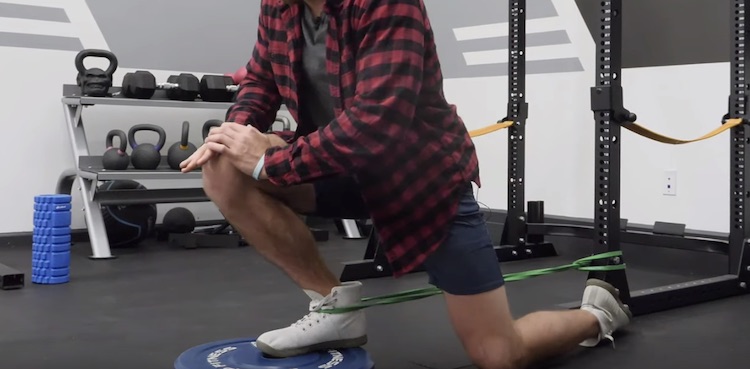
The first exercise is the ankle distraction which is awesome for improving ankle range of motion. This is a great active mobility exercise that requires minimal effort and it provides a ton of bang for the buck.
In addition to working through ankle range of motion, this is also a useful exercise for warming up the skill of gripping the floor. As the ankle flexes forward, actively grip the floor with the foot. This helps simulate what will be happening during the squat sans the weight on the back.
2. Inchworm to Hip Opener
- Reps & Sets: 1 set 5-10 reps on each side
- Why: Hamstring Stretch, Passive Core Engagement, and Hip Mobility

The inchworm to hip opener is a great exercise to get the body moving through a couple different planes of motion. The inchworm is a passive movement for improving hamstring/ankle mobility while lightly focusing on core engagement when in an extended plank.
By matching and following it up with a hip opener, you’re killing two birds with one stone. First, this combo saves time by limiting the use of a separate hip opening drill, and second, by performing the hip opener you’re improving unilateral stability while increasing range of motion at the hip.
3. Hip Airplane
- Reps & Sets: 1 set 3-5 reps on each side
- Why: Unilateral Stability, Hip Mobility, and Lower Body Propriception
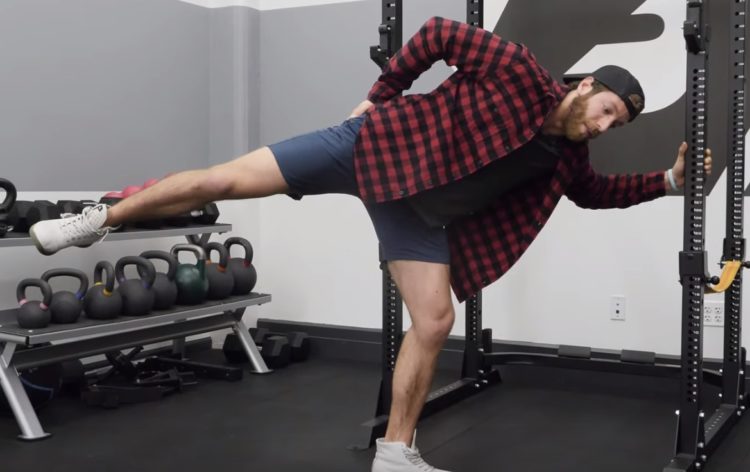
The hip airplane is a movement that was taught to me by Dr. Jordan Shallow in our IT Band video, and it’s been a staple in lower body warm ups ever since. This movement is great for building upon unilateral stability pre squats, and is fantastic for opening the hip and creating room throughout the hip capsule.
On top of being great for stability purposes, this movement is also great for actively working on glute and adductor mobility and pelvis alignment through various ranges of motion.
4. Extended Plank
- Reps & Sets: 1 set of 10 leg lifts on each side
- Why: Passive Core Engagement, Knee Tracking Mechanics, Lower Body Primer
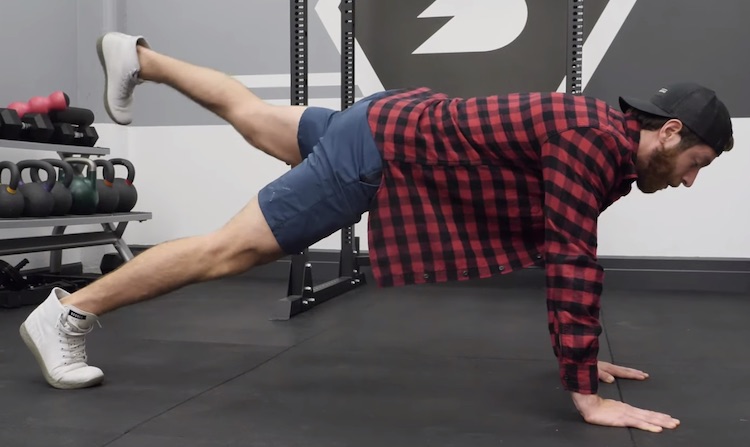
The extended plank is great progression into stability, as it requires the full body to promote stability and when adding a leg lift, the body has to stabilize while creating a glute contraction.
With this exercise, focus on pulling the ground together with the feet and hands and maintaining your neutral body alignment when performing the leg lifts.
5. Glute Bridges
- Reps & Sets: 1-2 sets 10-20 reps
- Why: Glute Activation
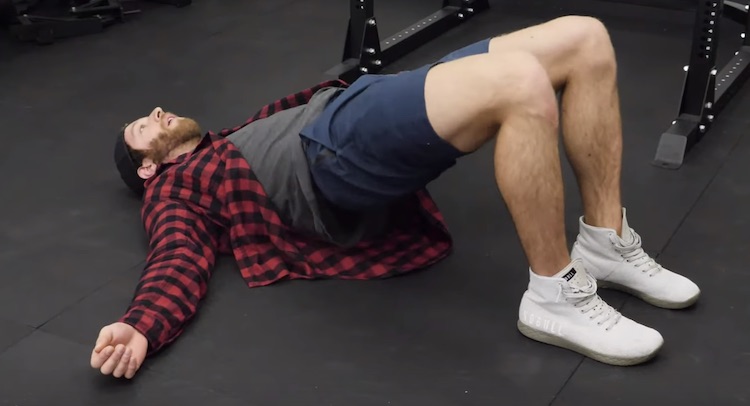
The glute bridge doesn’t need much of an introduction. This warm up exercise is great for increasing awareness of hip extension and activating the glutes.
Focus on maintaining a neutral rib alignment and fully contracting the glute to create a strong hip extension. This is the final warm up movement to be performed without an external load.
6. Offset Grip Split Squat
- Reps & Sets: 1-2 sets 8-10 reps on each side
- Why: Passive Core Engagement, Knee Tracking Mechanics, Lower Body Primer
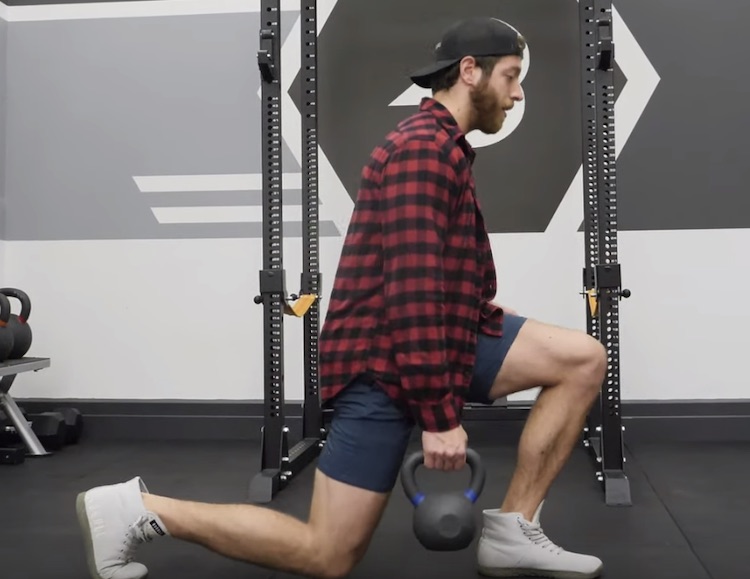
The offset grip split squat is a solid exercise to use to begin loading the body. I love this various for a couple distinct reasons. The offset nature of the kettlebell or dumbbell produces a light counter-balance stimulus on the core to maintain its posture, which is needed for strong squats.
The split squat is the perfect transition from stability focused movements to loading due to its unilateral nature. This exercise is great for opening the hip, priming the lower body, and working on single-leg stability.
7. Goblet OR Zercher Squat
- Reps & Sets: 1-2 sets 8-10 reps
- Why: Lower Body Primer
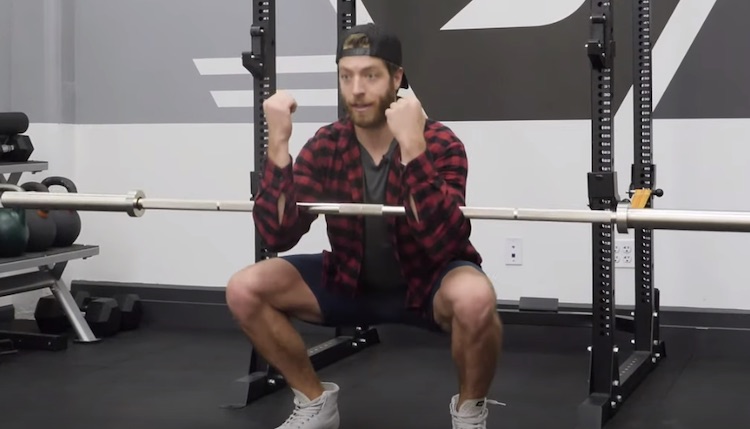
The final movement to tie everything together before getting under the barbell is an anterior loaded squat variation. For beginners, opt for a goblet squat, and for those looking for a challenge use a lightweight Zercher squat.
I love these variations because they require the torso to remain upright and the anterior load often allows for lifters to achieve full depth a bit easier. These variations are the perfect combination for working through a healthy range of motion before heavy loads and lightly challenging the body before working sets.
Wrapping Up
Hopefully this squat warm up provided some benefit for your training! Whether you want to try the warm up as a whole, or implement and cherrypick some of the movements, remember that your individual should be individual based on your needs. When building constructive warm ups, it helps to remember these three important points:
- Warm ups are individual
- Walk the line between necessity and practicality
- Keep it simple
Warm Up FAQs
What's the best way to warm up for squats?
First, let’s move away from the idea of “best” as a word to classify particular warm ups. A great squat warm up should be individual and composed of movements to help an athlete prep for the workout they’re taking on — there is no one best option for a warm up.
So a great warmup, should be composed of movements that help activate muscles needed for the workout and build proprioception/body awareness before physically loading the body.
How should I build my squat warm up?
A good way to start building a squat warm up is to consider what’s needed and practical, then experiment with various exercises. For example, if there are movements that you absolutely love having, then include those and factor in the practicality of your warm up, so consider things like equipment availability, time constraints, and so forth!
Can I just do light squats for a warm up?
Yes, absolutely! Again, it’s best to warm up in a way that fits your wants and needs best. If you want to jump under a barbell and warmup with load management, then go forth and do so!
Editor’s note: This article is an op-ed. The views expressed herein and in the video are the author’s and don’t necessarily reflect the views of BarBend. Claims, assertions, opinions, and quotes have been sourced exclusively by the author.